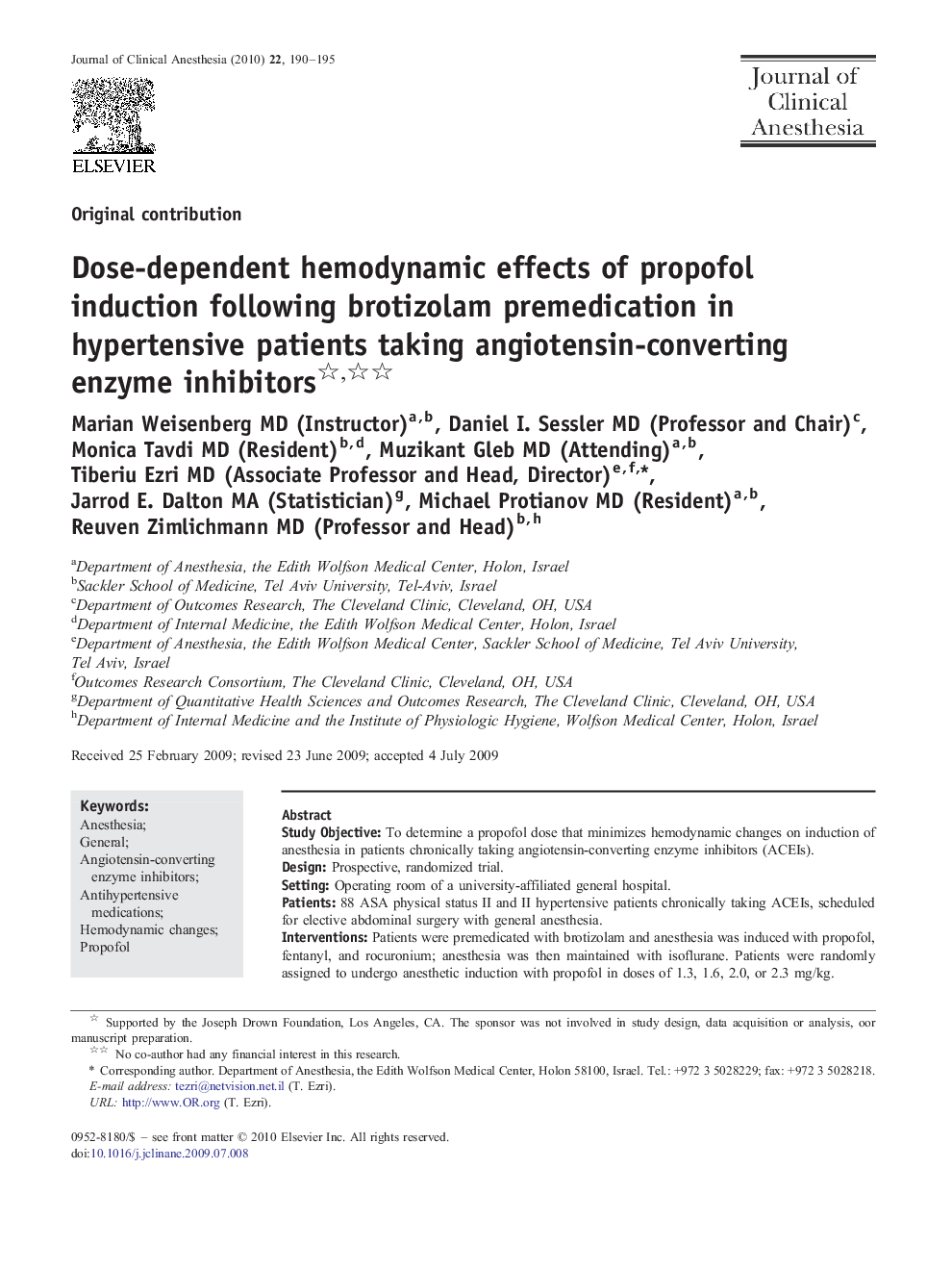| Article ID | Journal | Published Year | Pages | File Type |
|---|---|---|---|---|
| 2763180 | Journal of Clinical Anesthesia | 2010 | 6 Pages |
Study ObjectiveTo determine a propofol dose that minimizes hemodynamic changes on induction of anesthesia in patients chronically taking angiotensin-converting enzyme inhibitors (ACEIs).DesignProspective, randomized trial.SettingOperating room of a university-affiliated general hospital.Patients88 ASA physical status II and II hypertensive patients chronically taking ACEIs, scheduled for elective abdominal surgery with general anesthesia.InterventionsPatients were premedicated with brotizolam and anesthesia was induced with propofol, fentanyl, and rocuronium; anesthesia was then maintained with isoflurane. Patients were randomly assigned to undergo anesthetic induction with propofol in doses of 1.3, 1.6, 2.0, or 2.3 mg/kg.MeasurementsOscillometric blood pressure and heart rate were evaluated at one-minute intervals during the first 10 minutes of anesthesia. End-tidal isoflurane concentrations were also recorded. Episodes of hypertension, tachycardia, bradycardia, or hypotension (defined as > 30% of baseline values) were managed per protocol with esmolol, atropine, phenylephrine, or ephedrine. Administration of any of these drugs was considered a pharmacological intervention.Main ResultsAfter adjusting for covariables in a model assuming a linear relationship between dose and log-response, each propofol dose increase of 0.3 mg/kg was associated with a 31% increase in mean number of hypotensive/bradycardic episodes requiring interventions (95% confidence intervals of +5% and +65%; P = 0.018). Based on our model, a dose of 1.3 mg/kg resulted in the fewest number of pharmacological interventions.ConclusionsIn patients chronically taking ACEIs, low doses of propofol reduce hemodynamic instability.
